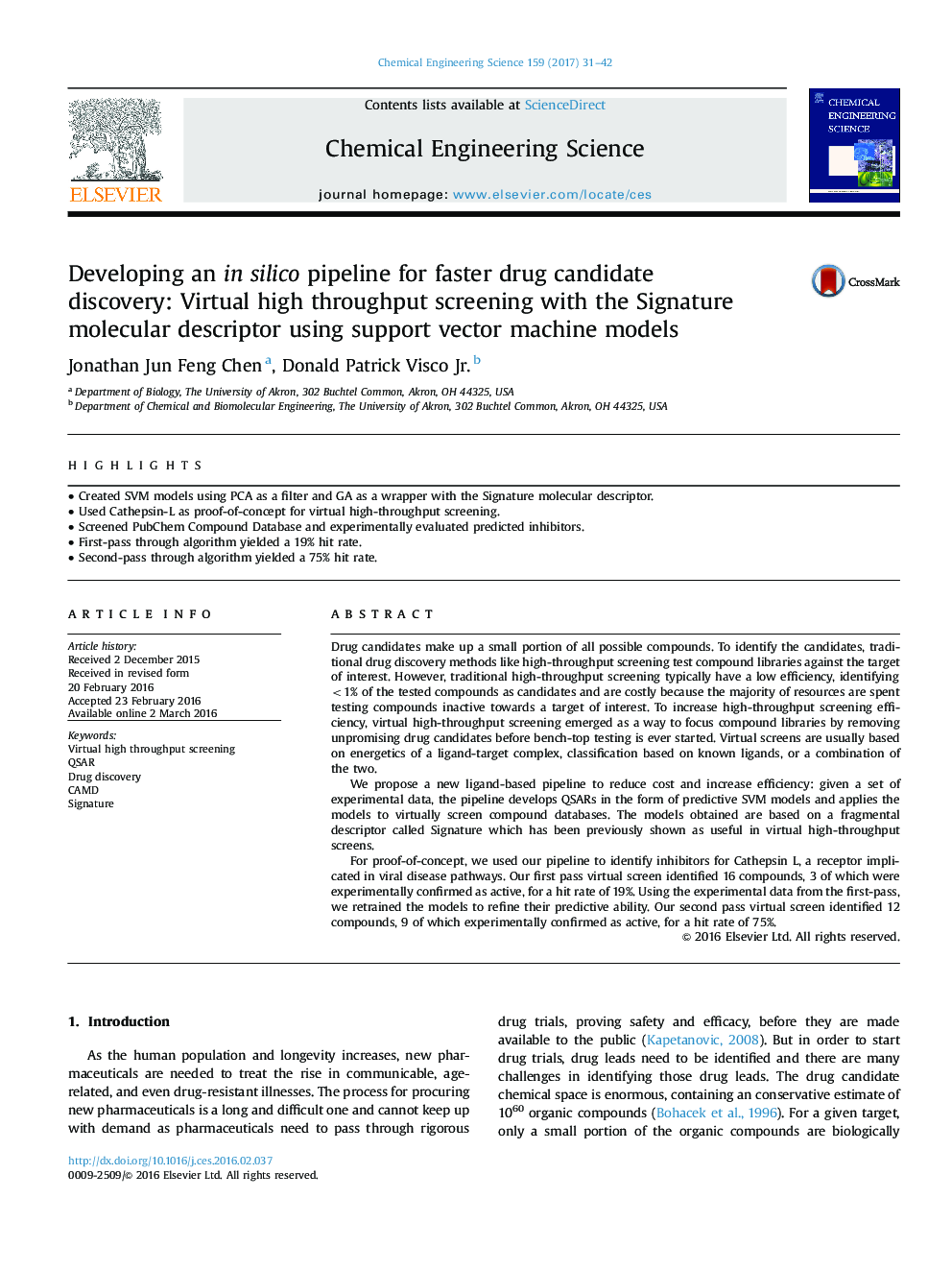| Article ID | Journal | Published Year | Pages | File Type |
|---|---|---|---|---|
| 6467769 | Chemical Engineering Science | 2017 | 12 Pages |
â¢Created SVM models using PCA as a filter and GA as a wrapper with the Signature molecular descriptor.â¢Used Cathepsin-L as proof-of-concept for virtual high-throughput screening.â¢Screened PubChem Compound Database and experimentally evaluated predicted inhibitors.â¢First-pass through algorithm yielded a 19% hit rate.â¢Second-pass through algorithm yielded a 75% hit rate.
Drug candidates make up a small portion of all possible compounds. To identify the candidates, traditional drug discovery methods like high-throughput screening test compound libraries against the target of interest. However, traditional high-throughput screening typically have a low efficiency, identifying <1% of the tested compounds as candidates and are costly because the majority of resources are spent testing compounds inactive towards a target of interest. To increase high-throughput screening efficiency, virtual high-throughput screening emerged as a way to focus compound libraries by removing unpromising drug candidates before bench-top testing is ever started. Virtual screens are usually based on energetics of a ligand-target complex, classification based on known ligands, or a combination of the two.We propose a new ligand-based pipeline to reduce cost and increase efficiency: given a set of experimental data, the pipeline develops QSARs in the form of predictive SVM models and applies the models to virtually screen compound databases. The models obtained are based on a fragmental descriptor called Signature which has been previously shown as useful in virtual high-throughput screens.For proof-of-concept, we used our pipeline to identify inhibitors for Cathepsin L, a receptor implicated in viral disease pathways. Our first pass virtual screen identified 16 compounds, 3 of which were experimentally confirmed as active, for a hit rate of 19%. Using the experimental data from the first-pass, we retrained the models to refine their predictive ability. Our second pass virtual screen identified 12 compounds, 9 of which experimentally confirmed as active, for a hit rate of 75%.
